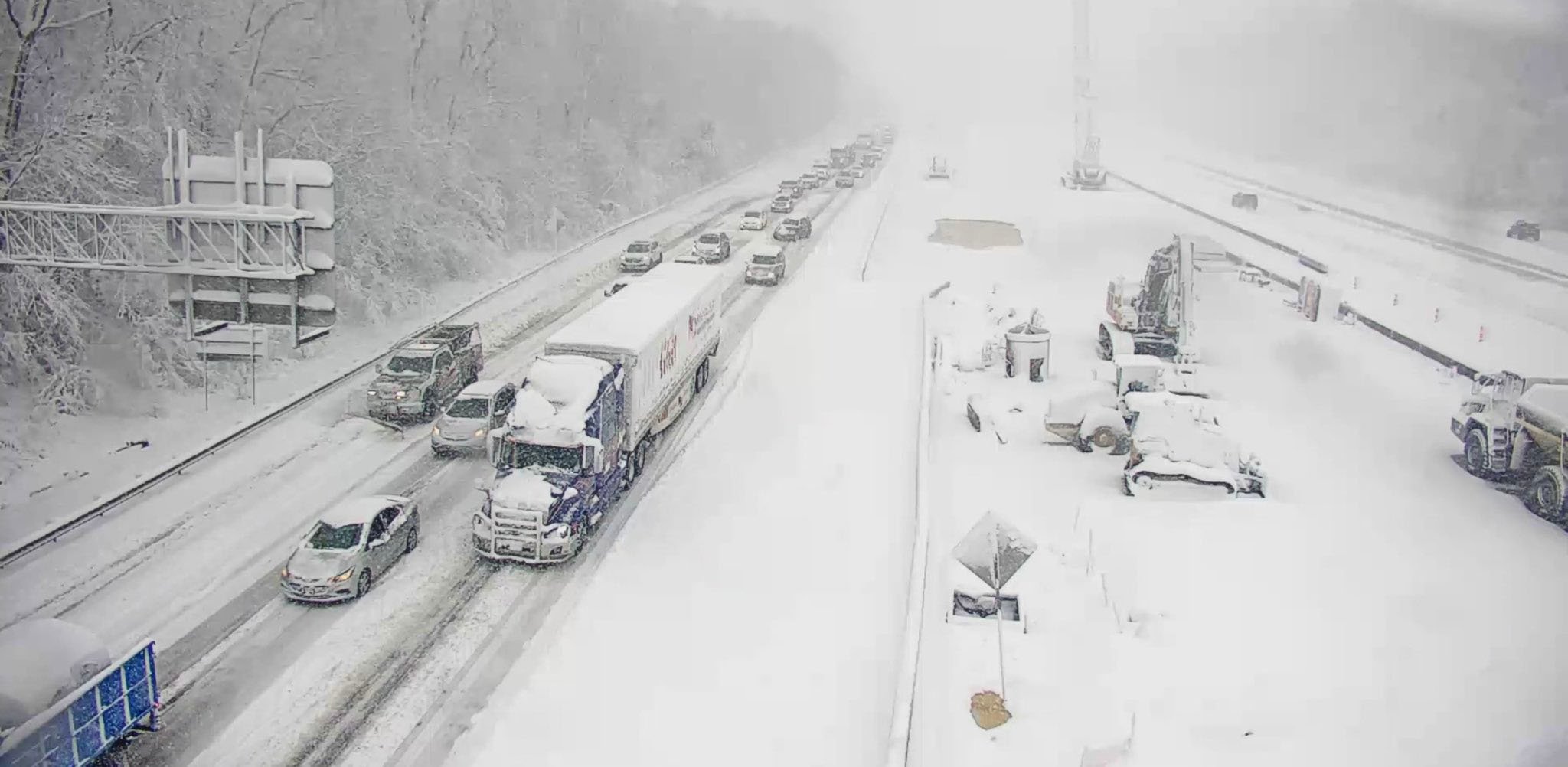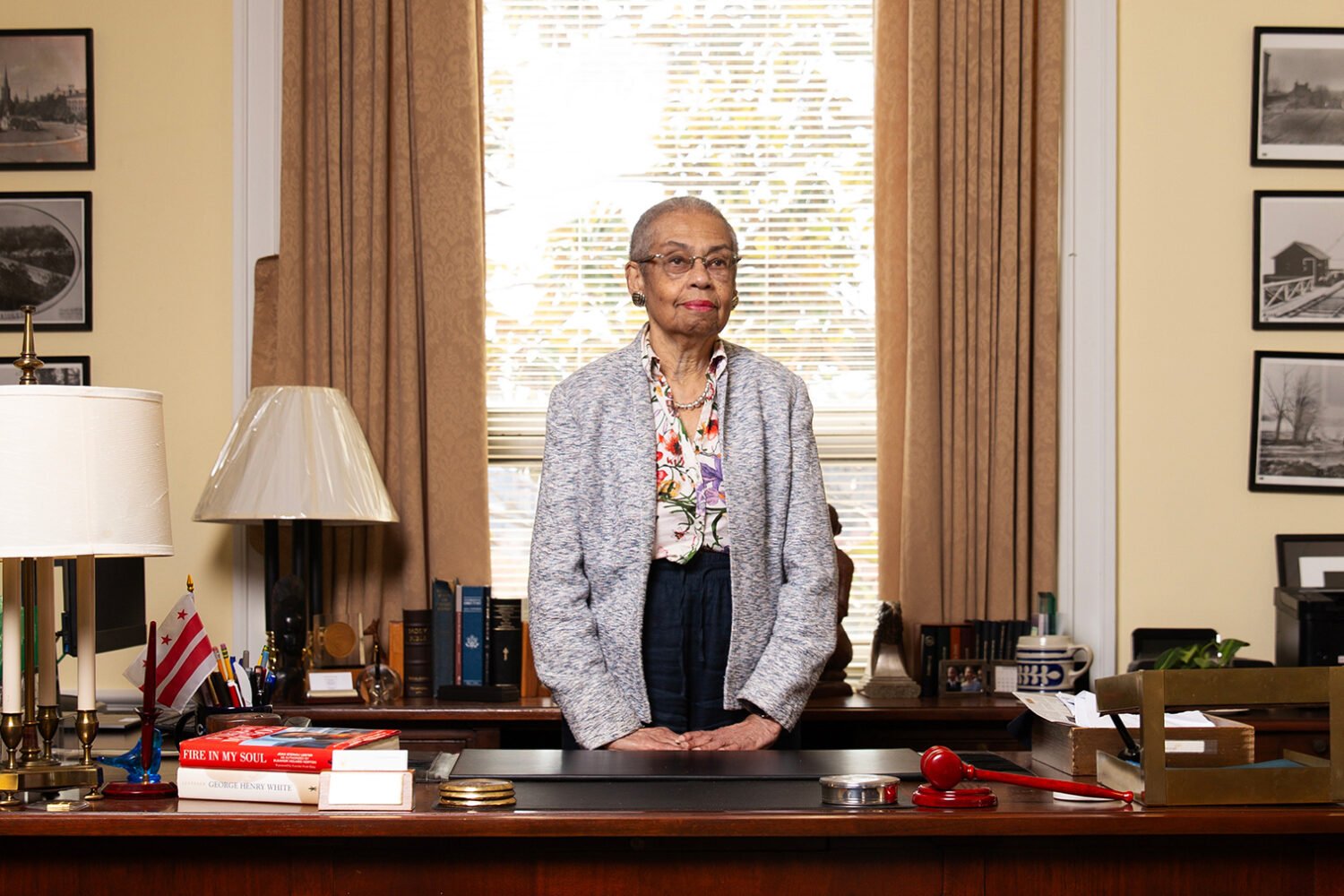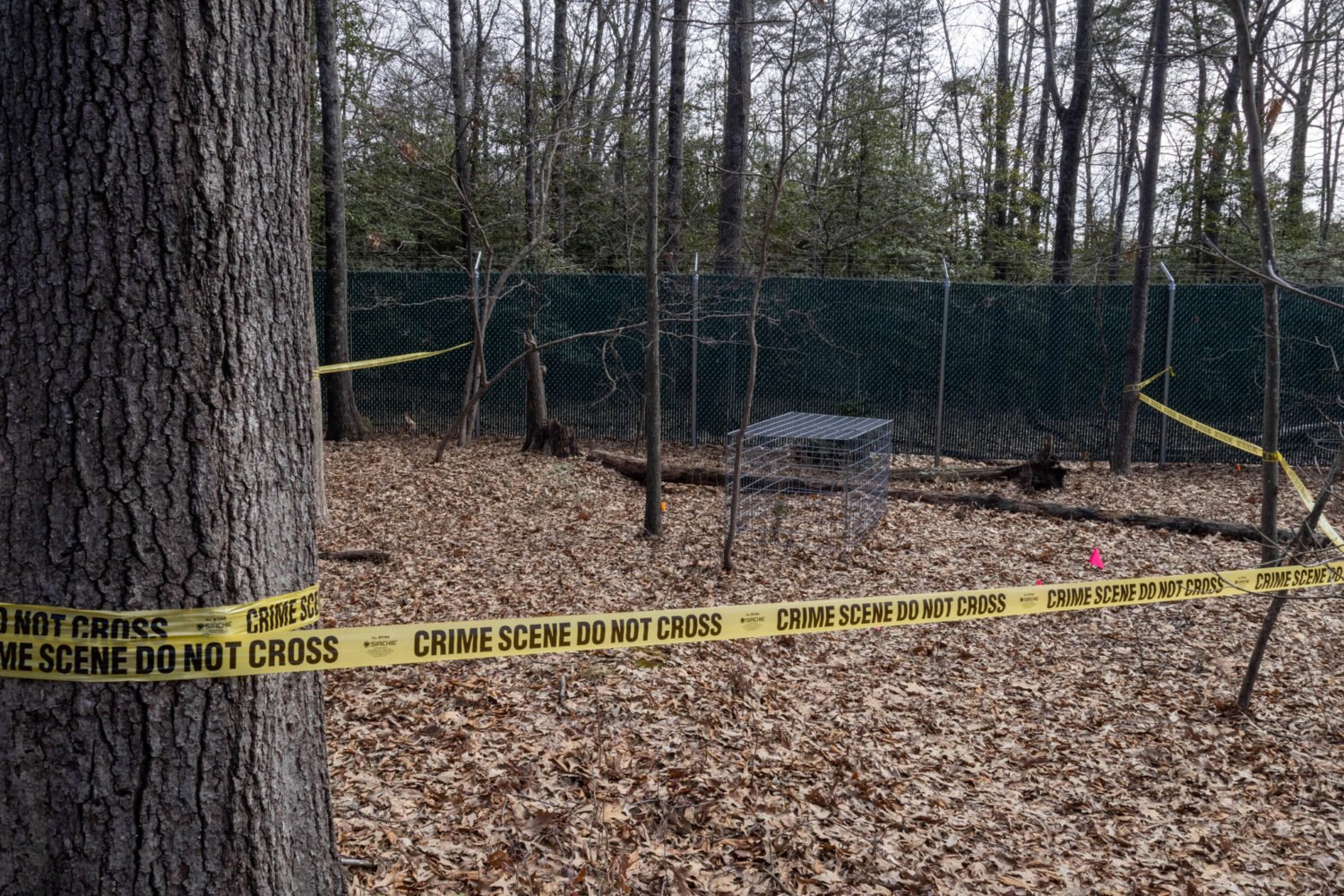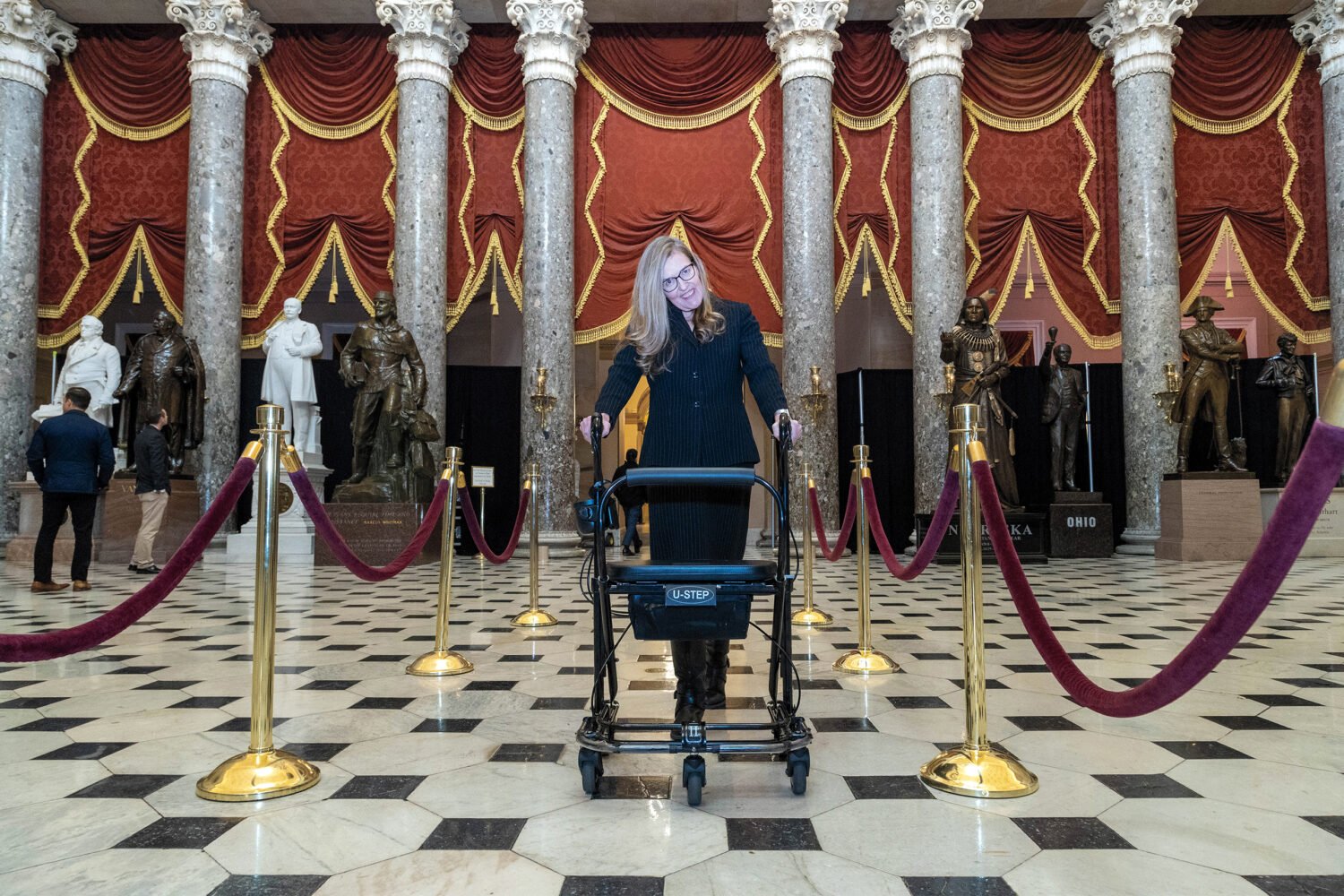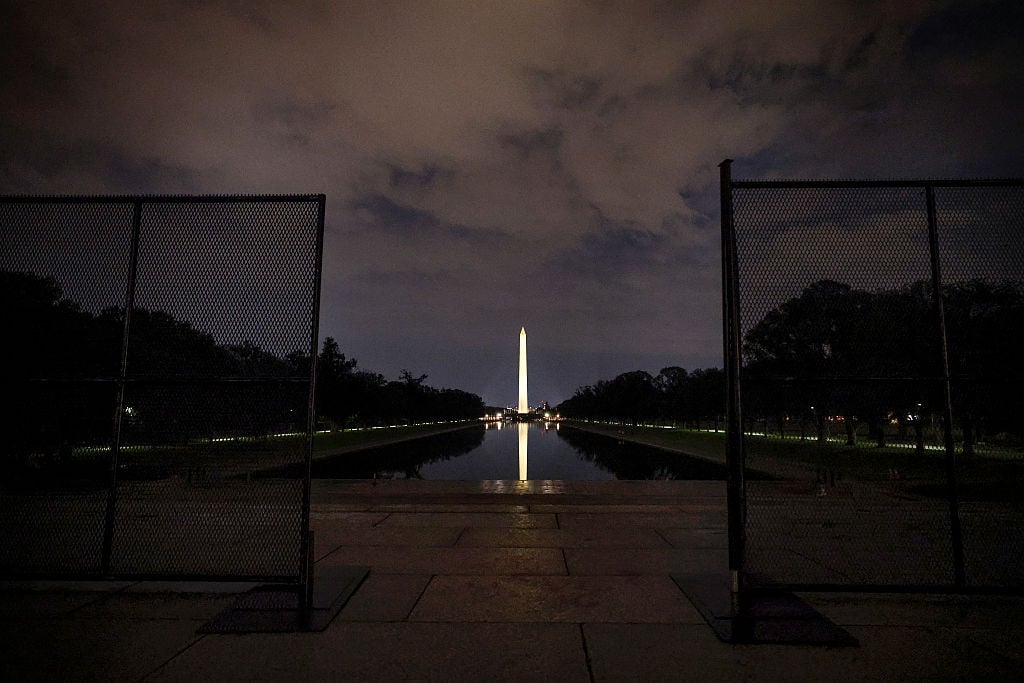Contents
On the first Monday of 2022, hundreds of drivers were trapped for the better part of a day or more in the frigid cold on I-95 around Fredericksburg, Virginia.
Truck drivers, families with kids returning from the holidays, locals making a quick trip between towns, even a US senator on his way back to the Capitol—all found themselves stranded, unprepared to make it through the coming night. Watching their gas dwindle, looking in vain for official assistance, posting TikTok videos to document hour 18 . . . 19 . . . 24 .
Drivers turned off their engines until they could no longer bear the subfreezing temperatures. Some braved the snow and, later, almost four inches of ice to get food and fuel. Many relied on the generosity of better-prepared truckers as small communities formed. Amazingly, no one died.
Due to widespread power outages, many of the Virginia Department of Transportation’s traffic cameras were down, leaving it blind to the situation on some parts of the highway. Though VDOT’s seeming inaction during much of the debacle was one of the greatest sources of frustration and anger, there seems to be blame to lay almost everywhere: If it hadn’t been the end of a holiday weekend, if rain hadn’t so quickly turned to snow, if thousands of flights hadn’t been canceled due to Covid and the storm, if trucks had been able to lay salt before the frozen precipitation started, if officials had communicated better among jurisdictions, if this part of the interstate weren’t under construction.
In April, VDOT released a report conducted by an outside company to determine what went wrong. (Some of its findings are included in this article.) But what about the people held captive on the highway? What was the experience actually like for them?
Six months later, in the heat of summer, we look back—and listen.
“We Weren’t Thinking About Snow at All”
Saturday, January 1
New Year’s Eve revelers in the region wake up to near record-high temperatures—at midday in Fredericksburg, it’s 61.
Sunday, January 2
The National Weather Service forecasts that our area will see rain turning to snow the next day. VDOT starts a messaging push to alert residents to the expected conditions. Press releases go out to media—almost exclusively in Virginia and the DC area. Other states connected by I-95, such as North and South Carolina and Florida, likely don’t get the same warnings.
The weather pattern is a challenge to storm planning; VDOT’s standard practice is not to salt if significant rain falls before snow, because the salt would wash away. The NWS predicts moderate snow, while DTN, a private weather-forecasting service, estimates a peak rate of about two inches per hour. VDOT prepares for the more severe possibility. Out-of-state travelers packing to drive home Monday check their weather apps and see it’s in the 60s in Virginia.
Monday, January 3
1 AM
Rain begins. Mild, wet days have softened the ground around the roots of trees, making them less able to handle significant weight on their branches. The temperature is 43 in Fredericksburg.
4 AM
There are two car crashes near the border of Stafford and Prince William counties due to slick roads. They’ll be the first of many for the day—a fair portion of the 833 crashes and 819 disabled vehicles record-ed statewide.
5 AM
The temperature is 34 in Fredericksburg. Snow starts, with no salt to keep it from sticking.

Arianna Paone, 22, leaves North Carolina, where she was visiting her boyfriend, for home on Long Island.
“I wasn’t really expecting it to snow in Virginia. It started as a windstorm, then a rainstorm, then turned into a snowstorm.”
6 AM
Plowing begins in both directions on I-95. Trucks clear their routes in about an hour and a half. A Toyota Camry going too fast for the conditions spins out and hits a tractor-trailer. The Toyota flips, and both come to a stop on the shoulder after striking a Jersey barrier. Neither driver is injured.
 7 AM
7 AM
Gail Donner, 74, and her husband hit the road from Santee, South Carolina, where they stopped on the way from their Florida vacation property.
“We weren’t thinking about snow at all—you don’t when you’re in Florida. But after hearing about it, we decided not to stop and visit a friend on Monday. As it turned out, it was like we were chasing the snow.”
8 AM
NBC4 reporter Melissa Mollet describes the traffic around Fredericksburg as “slow,” with “a sprinkling of accidents.” Says Mollet: “It is really, really slick out there. Just be careful and stay home if you possibly can.”
10 AM
Over the past three hours, five tractor-trailers have become stuck or have jackknifed on a five-mile stretch north of Fredericksburg. Congestion from MD-210 has backed up into Virginia. Trees weighed down by snow fall onto power lines and thoroughfares, causing overflow traffic from unplowed local roads to feed onto the interstate around Spotsylvania, Stafford, and Fredericksburg. Snow is accumulating more than two inches an hour. All of this makes it hard for the plows to run their routes.
Understaffed due to Covid and short on surveillance options because of power outages, local VDOT districts and emergency services suffer from poor communication. Each jurisdiction is acutely aware of its own problems but not of the unfurling crisis.
11 AM
Gail Donner: “We started to think about whether we should look for a hotel and wait until Tuesday to go home. [But] things were sold out, and we decided to keep going.”
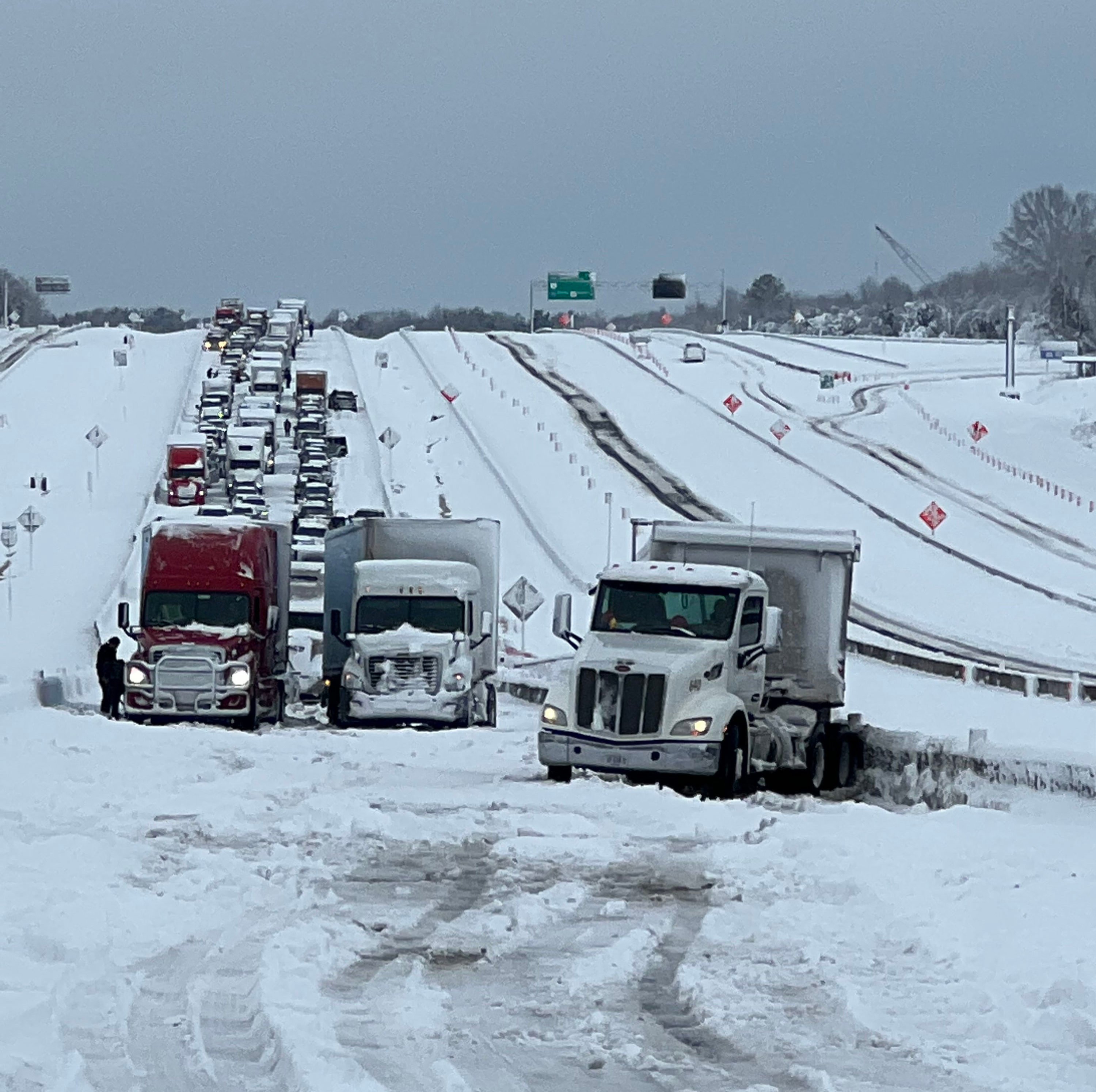
“People Started Making Their Own Lanes”
Monday, Noon
Gail Donner: “GPS suggested we take a route to save an hour and 20 minutes. That didn’t make sense to us—it was snowing, but we were moving. But we decided to do what Google said, so we got off the highway.
“It was snowing pretty hard. We were on some two-lane roads, and the plows had gone through one pass, making one lane down the middle. So if we were going one way and somebody was coming the other, somebody had to pull to the side [and] get in the snow. We got to a point where [GPS] said we had to turn right, and the plow had not been there—you couldn’t even see where the road was to make a turn. We decided to go back to I-95, because how long could it be?
“We were among the lucky people. Before we got back onto I-95, we got gas, and we’d emptied the food from the refrigerator in Florida, so we had everything. We got back on the highway and spent ten hours getting to the next exit.”
1 PM
InsideNoVa reports that parts of I-95 South near Stafford Regional Airport were closed around noon due to the tractor-trailers stuck near the Centreport Parkway exit. All southbound lanes are closed, with only one northbound open.
VDOT tweets: “We know many travelers are stopped behind these incidents + traffic blockages. Our crews and towing partners are working to reach incidents and clear them to reopen lanes, but intense snowfall rate continues at 1-2 inch per hour.”

Robert Soniak, a 64-year-old retired officer working for the Department of the Army, leaves his home in South Carolina for a work trip to the DC area.
“I was heading back by myself to go to work the next morning. My wife warned me, ‘Hey, you know the snowstorm is coming in DC, and you know how it goes.’ We had lived in the area many years, and in DC you get snow, you get rain, people panic. Meteorologists predict five to seven inches, but the reality is normally a little less.”

2 PM
Kevin Young, 49, a salt-truck and snowplow driver, receives a call at home outside Richmond.
“We were told that VDOT needed help in Fredericksburg. All I had heard was that Fredericksburg had a little more accumulation than where I live, so I assumed the job was putting down sand or pushing snow to the side to allow vehicles to pass.”

Alyssa Sprake, 26, and her husband finish lunch in North Carolina. They left Charleston, South Carolina, that morning with their puppy to complete their two-day trip home from Florida to Arlington.
“We were supposed to fly home December 27, but he tested positive for Covid and wasn’t going to be able to fly for ten days. We decided to rent a car. My weather app did not say we were going to get as much snow as we did. We didn’t expect the roads to not be treated or plowed—that was a complete shock.”
Arianna Paone: “People started making their own lanes. The truck in front of me went off into the median. I have a Wrangler, so I put it into four-wheel drive and followed him as far as I could. We got stopped by the traffic two or three miles from the exit.”
Back to Top
“30 Miles From Our House, Google Said There Was Six Hours of Traffic”
Monday, 3 PM
Finally, the snow stops. Almost 15 inches is on the ground in the most affected areas. Traffic is moving, albeit at a crawl. Reports have come in about impassable side roads. Many businesses such as hotels, gas stations, and restaurants are closed, their employees sheltering from the storm. VDOT is deploying significant resources to keep traffic moving and the highway open, including blocking selected on-ramps and towing disabled vehicles to commuter lots. For the thousands of out-of-state travelers making their way home along the Eastern Seaboard, I-95 is their only option.
Gail Donner: “I won’t say it was a party, but people were sociable. There wasn’t a single time where somebody was yelling. People talked to each other, they were walking their dogs, letting their kids out of the seat belts. We were a mile from exit 118, so people walked to get something to eat at the Sheetz.”
4 PM
More than 1,000 flights have been canceled in the DC area due to Covid staffing shortages and the storm. Some travelers, unaware of conditions and eager to get home, opt to drive. On average, I-95 traffic volume is 65 percent higher than on the same day in 2019, when conditions were clear and highs in the 50s. The Culpeper Times reports that state troopers responded to 313 crashed and 277 stuck or disabled vehicles by 10:30 am and that the Culpeper division alone responded to 82 incidents by 3:30.
Alyssa Sprake: “We were about 30 miles from our house and hit dead-stop traffic. We should have been home in 45 minutes, but Google Maps said there was six hours of traffic. We tried to find a detour on Route 1. Power lines were down, and we were just inching. Eventually, we tried to turn left, and that area hadn’t been plowed, so we were hydroplaning. We turned around, but we were having trouble with cell service. We were basically zooming in on grids on Apple Maps to try to find our way back to I-95. We got back on right where we got off.”
5 PM
Crashes around Fredericksburg block all lanes of I-95 North at mile marker 133 and I-95 South at exit 126. Traffic won’t move again until morning.
Gail Donner: “I had Zoom on my phone, so I went to meetings for my synagogue and attended a Zoom wedding in New Jersey.”
Arianna Paone: “I finally got off the exit, and I had started running out of gas. I had to go to three stations. People were fighting over who got to the pump first, about how some places were only accepting cash. I drove around trying to find a hotel, but my parents texted and said the only ones available were in Washington, DC. I had to get back on I-95.”

Caroline Franklin, 32, and her husband pull their semi onto the interstate with a load going from Hagerstown, Maryland, to Suffolk, Virginia.
“The roads were slick, but we have 18 wheels and we’re used to driving in that. I’d seen there was traffic on I-95, but that’s normal, given the weather. But as I was watching the map, I’m seeing the traffic get longer and longer. I was like, ‘Maybe we should pull over,’ but the rest areas were full. We’re in a truck—we can’t park anywhere, so we kept going. I didn’t think it was going to be that bad, because by then the snow had stopped.”
6 PM
Kevin Young: “I got on I-95, and when I got to exit 104 [near Ruther Glen], traffic was slowing. About a minute after I passed the exit, I came to a dead stop. I looked on my phone, and the line on the map was red, but I was thinking there was a wreck or somebody stalled. I didn’t know I was going to be stuck.”
Back to Top
“Even My Dog Didn’t Want to Deal With the Ice”
Monday, 7 PM
The sun sets, and temperatures begin to drop into the 20s. Choked traffic and shoulders blocked by disabled cars or construction have kept the foot of snow in Fredericksburg from being plowed. The slushy precipitation has been packed under the weight of thousands of tires and is now topped by several inches of ice. News reports describe hundreds of stranded vehicles.
Alyssa Sprake: “Our golden retriever was five months old. She didn’t bark, she wasn’t whining. It was her first time seeing snow, so we went out and played with her, she was so excited. People were walking up and down the interstate. They were pretty discouraged when they saw the taillights.”
8 PM
Kevin Young: “I was relying on truck drivers on the CB channels. I just heard there were some wrecks ahead and the lanes were closed—that you couldn’t get off some exits because they were snowed in or just hadn’t been taken care of. I heard truckers saying their brake lines were frozen in place. Others were low on fuel, so they parked on the side of the road and took a nap because they wanted to get their eight-hour break in.
“There was information, but a lot of misinformation. Some people would say certain roads were open; others would say they were closed. At one point, I heard there were a couple fatalities. [No deaths were reported on that part of I-95 that day.] People were blaming the governor, the police, doing ‘Let’s go, Brandon’ chants. I never saw any police.”
Gail Donner: “The highway was like a sheet of ice. Even if the cars cleared out, there was no way we could drive on it. Nobody came by and asked if you were okay.”
9 PM
Kevin Young: “I’m a diabetic, so three hours in, I started checking my glucose meter. That’s when I started getting concerned. I hadn’t brought anything wholesome, just crackers and peanuts. If anybody else had a medical issue, I didn’t see how any kind of emergency vehicle could get by.
“People came to me and were asking for snacks, cell-phone chargers. Truck drivers offered food and water from their stash.”
Caroline Franklin: “I took my dog out, and even my dog didn’t want to deal with the ice—she was like, ‘I’ll pee in the truck if I have to.’ ”
Robert Soniak: “They were starting to apologize on WTOP, saying, ‘We’re asking VDOT for information, but we have none.’ ”
10 PM
Alyssa Sprake: “Initially when we stopped, we thought we’d be home around midnight, but by 10 we were telling our parents, ‘We have no idea.’ ”
11 PM
The snowplows that are able to evade the gridlock finish their second pass—it’s taken them 16 hours to make it through. Traffic is so congested that they won’t be able to make another pass. Tow trucks stop responding to calls to remove wrecks, as day-shift drivers time out of driving eligibility and companies refuse to send more equipment to areas where their drivers are already trapped.
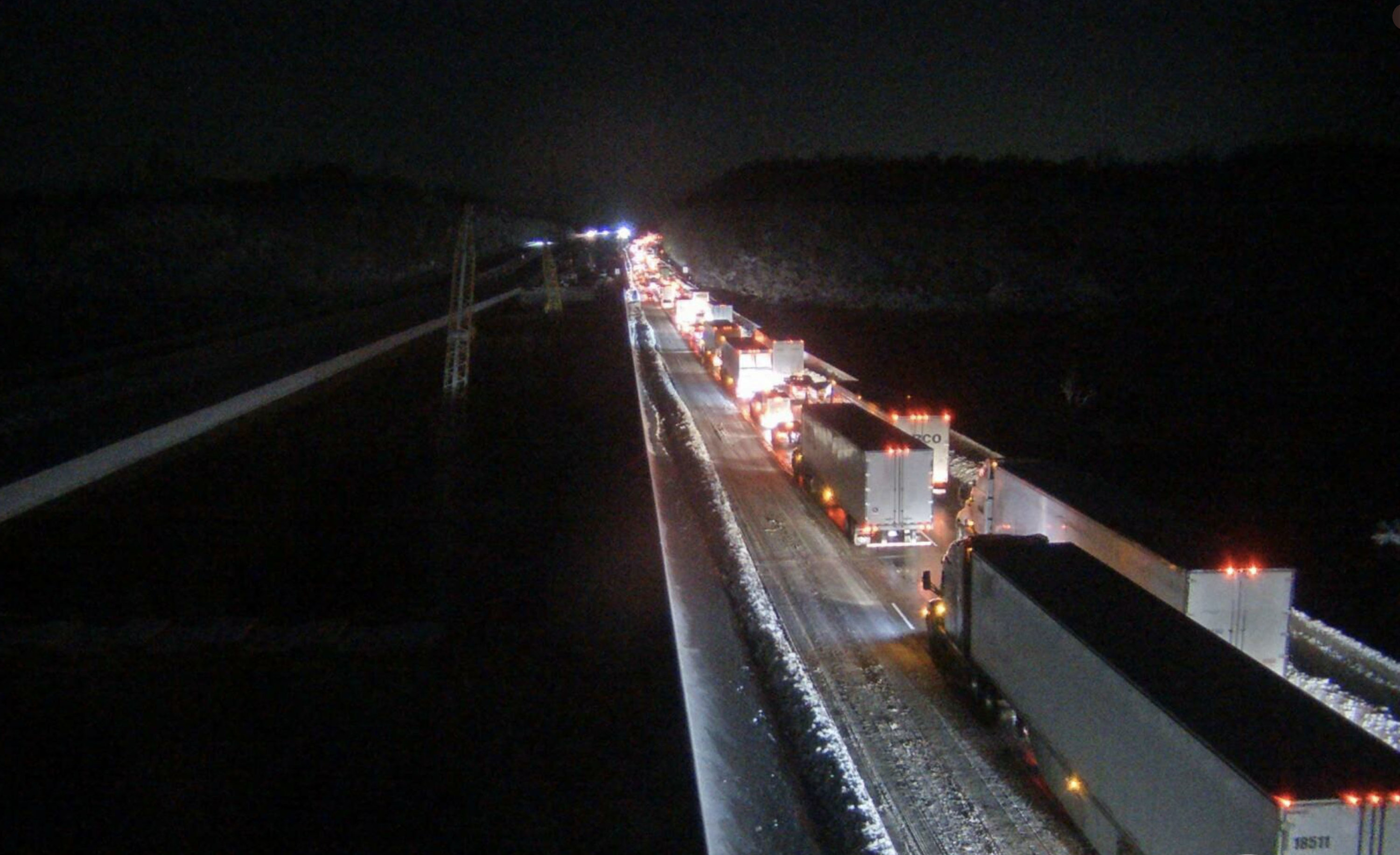
“I Will Tell You, the Truckers Had the Best Coffee”
Tuesday, January 4
Midnight
Gail Donner: “After a while, we could see they were getting people off at the exit, but because of the ice, it was like everybody gradually got into single file. We finally got off around 12:30. Nobody told us where to go.
“There was a Sheetz. We filled the tank and used the bathrooms. People were so nice, helping people find things on the shelf, waiting on line for the bathroom—everybody realized we’d all lived through the same experience together.
“My husband thought we should stay overnight in the parking lot and wait until morning, but we decided to try 301, which we found out had been plowed. We got home at 6:30 in the morning on Tuesday. [What should have taken about ten hours] was a 23-hour trip.”
Robert Soniak: “I’ve worked my whole life for the military, and part of my job is strategic planning. There are posters in almost every office in the Pentagon with a quote from Eisenhower: ‘Plans are nothing; planning is everything.’ I’m sitting there thinking about that because I’m thinking, ‘What is VDOT doing?’ I-95 is a major artery. This should never be [impassable] for any reason. It’s just poor planning.
“In the movie Patton, there’s a scene where the troops are moving through the mountains of Italy and come to this bridge, and all of a sudden the enemy is strafing the column. They get to the front of the column, and there’s a donkey cart in the middle of the bridge and they cannot move. [General] Patton comes up, takes out his pistol, shoots the donkeys, and they push the donkeys over the side to get the column moving. That’s what I thought of. We’re stuck there in 50 miles of traffic because of a tractor-trailer? Push it off the side into the woods—we’ll take care of it later.”
1 AM
Alyssa Sprake: “At first, people had been really helpful, helping getting cars unstuck, but by the middle of the night, people started revving their engines to try to get unstuck. There was a car stuck horizontally, with its engine facing us, and the driver was revving it. If he got unstuck, he was going to ram right into us.
“This huge semi came out of nowhere and pulled up next to us, trying to go between these other two cars. It was way too big, and people were honking, saying, ‘You’re not going to get anywhere—we’re all in the same situation!’ ”
2 AM
Kevin Young: “I wasn’t able to get in contact with my wife—my phone wasn’t picking up a signal. What if I go into a diabetic coma? Do I have enough fuel to stay warm? I was on the edge of a panic attack. All those things came flooding through, to the point that I had to go outside just to catch my breath.”
3 AM
Scattered disabled cars and tractor-trailers have made a 40-mile stretch on I-95 North and a 20-mile stretch on I-95 South near Fredericksburg impassable in both directions. VDOT decides it needs to close down sections of the interstate and starts making arrangements to do so.
Arianna Paone: “I ended up falling asleep in my car, and when I woke up, there was a little pathway and a whole bunch of cars around me trying to get out. One trucker got out of his truck and told me there was a slight pathway on the other side of his truck.
“I was able to get around everything and get up front where the accidents happened. Three tractor-trailers were stuck. One of the state troopers said no one was allowed to get through until they moved the trucks, out of a safety concern. One truck was blocking two lanes, and the other two were just stuck—they couldn’t get traction.”
Alyssa Sprake: “I got in contact with a friend who was also stuck, and she said, ‘We’ll be lucky if we get home by noon tomorrow.’ My husband and I had been trying to make light of it, playing “I Spy,” watching Harry Potter on Netflix, posting Instagram stories, talking to family and giving them updates. But right at that 3 o’clock mark, I started to freak out because I had no idea when we were going to get home.
“I felt like I was playing watch duty—I didn’t want to sleep. I had to go to the restroom and had no idea what to do. We were parked on the highway with thousands of other people. We hid behind the car door, but the semis were above us, and I feel like they could have a pretty good view.”
5 AM
VDOT officials meet to address the situation, and at 5:30 they call local emergency leaders to ask for assistance. The agency’s phone lines have been ringing nonstop with scared and angry drivers—it will field more than 20,000 calls by the end of the day.
Arianna Paone: “Once they got two of the trucks out, they started letting people pass while they worked on the one that was jackknifed.”
6 AM
Kevin Young: “As the sun came out, you could see more and more people taking advantage of the emergency-only exits in the middle, and I started thinking, ‘Maybe I can turn this [dump] truck around.’ When there’s snow covering those medians, you really can’t tell how deep it is. You could be going through one inch of snow and ice or it could be three or four. You might think underneath it there could be gravel and asphalt, but you could get to the other side and end up in a ditch.”
7 AM
The Washington Post publishes a blurb online saying both directions of I-95 in Fredericksburg are shut down and some drivers have been stuck more than ten hours.
Robert Soniak: “I will tell you, the truckers had the best coffee.”
Caroline Franklin: “I looked in on a few people to make sure they were okay. You could tell people were annoyed that nobody was there to help us, but everyone seemed in high spirits for how crappy a situation it was. There were people of all ages—twentysomethings playing loud music, an elderly couple, a rental moving truck with a mom, dad, and kid.”
Alyssa Sprake: “The traffic lightened and we started moving. Once it opened up, we got home in an hour.”
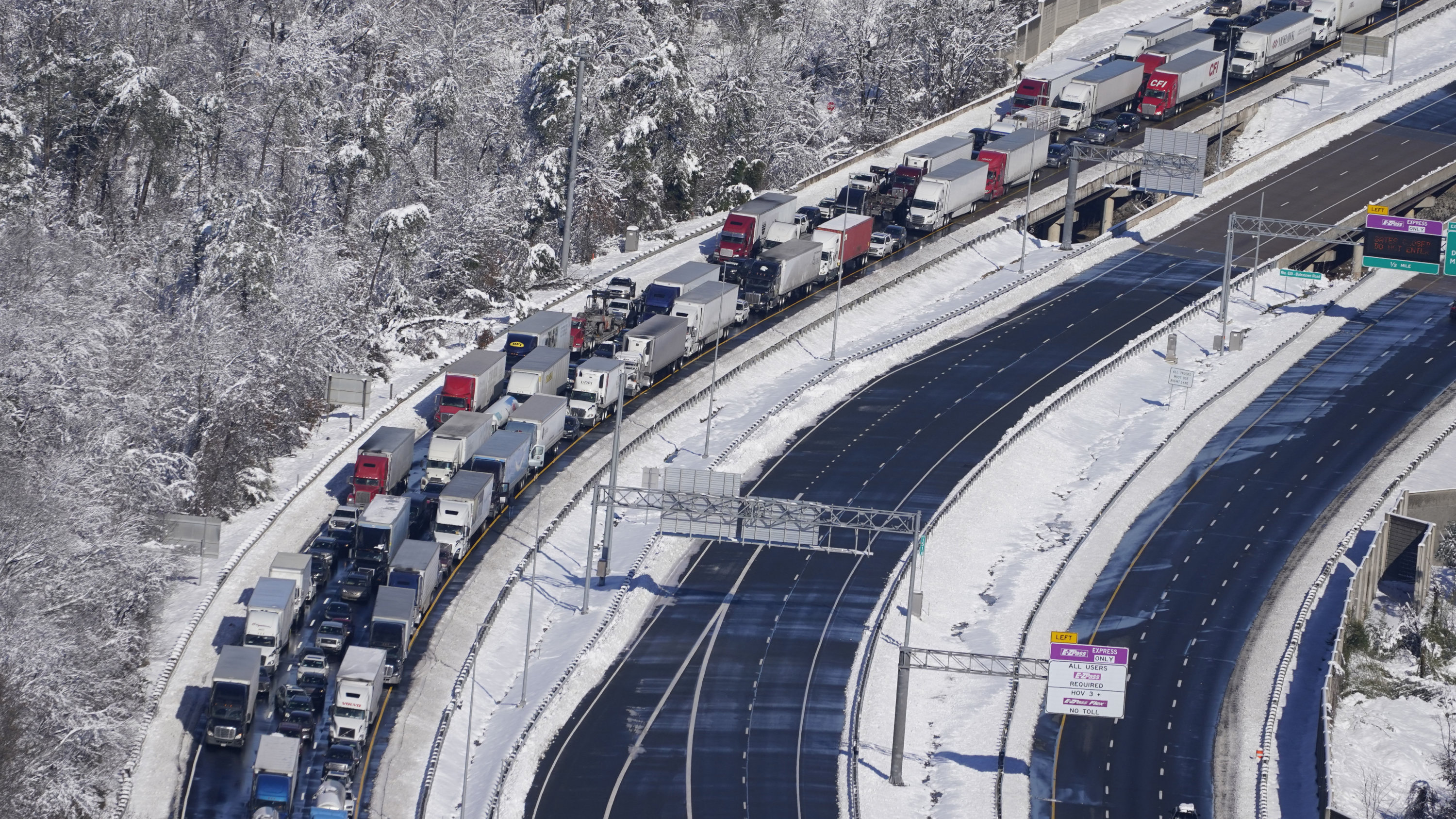
“It Was Like a Weight Lifted”
Tuesday, 8 AM
VDOT officially closes access to the worst-affected areas of the interstate between Ruther Glen and Dumfries northbound and between Stafford and Dumfries southbound.
Among the stranded drivers is Senator Tim Kaine of Virginia. Posting a picture of three semi trucks in all the lanes in front of him, he writes: “I started my normal 2 hour drive to DC at 1pm yesterday. 19 hours later, I’m still not near the Capitol. My office is in touch with @VaDOT to see how we can help other Virginians in this situation. Please stay safe everyone.”
9 AM
Some trapped drivers get an emergency push alert from the Virginia Department of Emergency Management saying help is coming “ASAP.” VDEM means to say officials are coming to clear blockages and get traffic moving, but many drivers interpret this as someone coming to check on their well-being. Nobody does.
Kevin Young: “I didn’t know if I was going to have enough traction to get over the left-hand lane, because there was probably about an inch and a half of ice. But once I saw where cars were able to turn in the median and the path they made, I was able to cross over and go back to I-95 South. It was like a weight lifted. The first thing I did was call my wife.”
10 AM
Robert Soniak: “Because those trucks were running all night, some were out of gas and couldn’t move. We were weaving in and out of stuck traffic, stuck tractor-trailers. People who had run out of gas were walking down the shoulders towards the exit about a mile and a half away. I picked up one woman who was not really dressed properly for the cold, and I drove her to the gas station. I got off in Ladysmith and zipped right out on 301.”
11 AM
VDOT is finally able to acquire a helicopter to conduct a flyover to assess the situation and create a tactical approach to clearing the interstate.
2 PM
Caroline Franklin: “When we got off, we didn’t know where to go. There were signs, but they were vague. A radio station said to take Route 1. We drove about five miles in, and it came to a dead stop.
“They weren’t thinking about trucks, and it seemed they hadn’t done anything to clear Route 1. I was on Facebook, and a lot of people that lived in that area were frustrated because trucks were going off the road. One lady said a truck was in her front lawn.”
3 PM
The last few trapped motorists are led from I-95, and disabled cars are cleared. Some of those who drive off are sent to side roads. A number of these have been plowed; others are snow-choked and littered with downed trees.
4 PM
Senator Kaine tweets a photo of his red SUV parked in a snowbanked US Capitol parking lot. “Ok after 27 hours on the road from Richmond to DC . . . .”
7 PM
Access to the affected area of I-95 reopens, and traffic starts moving—though because of unaddressed conditions on side roads, the nightmare for some, including Caroline Franklin and her husband, continues well into the night.
8 PM
Caroline Franklin: “There were all these cars stuck in the middle of [Route 1], and they didn’t even move the cars—they just plowed around them. We weren’t moving at all, and the fuel tank was reading E. I was terrified. I did not think we were going to make it. We turned off the truck, bundled up, and tried to weather it. It was about 20 degrees in the cab.
“I felt like I needed to do something, so I went live on TikTok. There were so many people saying, ‘We’ll bring you fuel!’ and I’m like, ‘Don’t do that! You’re gonna get stuck.’
“I hadn’t slept, so I started passing out in the front seat. I was super, super anxious, so even when I did try to shut my eyes, I kept jumping, feeling like we were moving or something.”
Wednesday, January 5
4 AM
Caroline Franklin: “We finally started moving a little, and it wasn’t until 6 am that we got to a Love’s to get fuel. It was 37 hours total. We’ve trucked across the entire country, we’ve been through every state, but I’ve never seen anything like this.”
All headshots courtesy of subjects.
This article appears in the July 2022 issue of Washingtonian.
